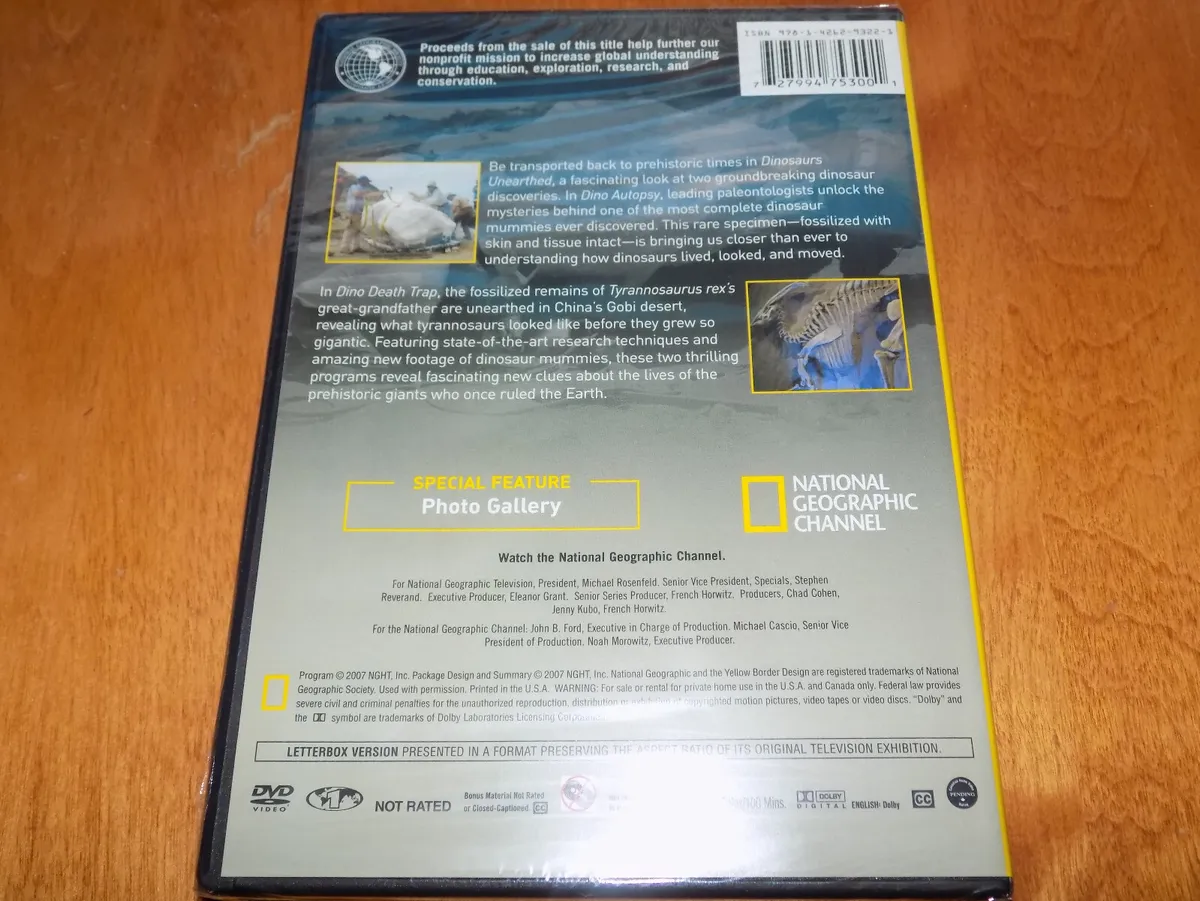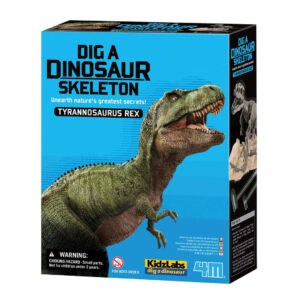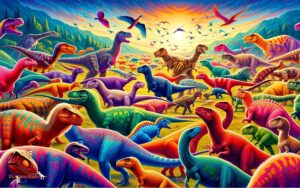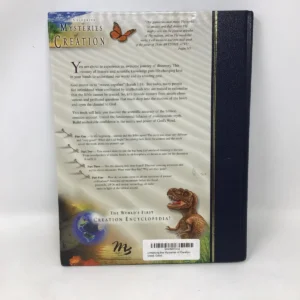When Dinosaurs Ruled the Earth: Unearthing Prehistoric Life
Dinosaurs dominated the Earth during the Mesozoic Era, roughly 252 to 66 million years ago. This period saw the rise and fall of these ancient reptiles.
Embark on a journey back in time to an era shrouded in wonder and mystery—the Mesozoic Era, renowned as the age when dinosaurs reigned supreme over our planet. Spanning approximately 186 million years, this remarkable epoch was characterized by the evolutionary diversification of dinosaurs into a multitude of species, some of which were colossal in stature while others boasted feathered bodies, inciting a sense of awe at their incredible adaptation and variety.
The Earth during this time was a vastly different landscape, teeming with lush vegetation and bustling with life both on land and in the seas, setting the stage for these fascinating creatures to thrive and evolve. Understanding the reign of dinosaurs not only captivates the imagination but also provides crucial insights into ecological dynamics, extinction events, and evolutionary biology. Dive deep into paleontological studies to untangle the mysteries of these prehistoric giants whose legacy continues to captivate the hearts and minds of humanity.

Credit: www.smu.edu

Era Of The Giant Reptiles
The Era of the Giant Reptiles sparks visions of a lost world where enormous dinosaurs thrived. Picture vast landscapes roamed by these prehistoric giants. This period remains one of the most fascinating chapters in our planet’s history. It’s a time that still captures our imagination and curiosity.
Dinosaur Dominion Timeframes
Dinosaurs ruled for over 160 million years. Their reign stretched from the Triassic to the Cretaceous period. Let’s delve into the periods:
- Triassic Period (250 – 201 million years ago): The rise of the first dinosaurs.
- Jurassic Period (201 – 145 million years ago): The era of giant sauropods and diverse ecosystems.
- Cretaceous Period (145 – 66 million years ago): Flourishing species and the eventual fall of the dinosaur empire.
Habitats And Diversity
Dinosaurs adapted to various habitats across the globe. They lived in:
| Habitat | Examples |
|---|---|
| Forests | Stegosaurus, Brachiosaurus |
| Deserts | Coelophysis, Spinosaurus |
| Coasts | Iguanodon, Hesperornis |
| Swamps | Sarcosuchus, Deinosuchus |
These massive reptiles varied in size and shape. From the fearsome T-Rex to the gentle giant Apatosaurus, they showed incredible diversity. Plant-eaters, meat-eaters, two-legged runners, and four-legged behemoths existed together.
Discovering Ancient Giants
Imagine walking alongside creatures as tall as a building. This was the world when dinosaurs ruled the Earth. The discovery of their remains tells a story of a long-lost age of giants. Let’s journey back in time to uncover these ancient beasts.
Early Fossil Findings
The quest to uncover the past began with curious findings; rocks that held the shape of bones. Peasants and scholars alike stumbled upon these stone puzzles buried within the Earth. Each discovery was a clue to the giants that once stomped across the land.
- Mary Anning’s first Ichthyosaur skeleton in 1811
- Heritage of dinosaur bone collections in European museums
- William Buckland’s recognition of Megalosaurus in 1824
Milestones In Paleontology
Our understanding of these ancient giants grew with every bone unearthed. Scientists worked tirelessly, piecing together the gigantic dinosaur puzzles. Breakthroughs in technology shone light on how these creatures lived and died.
| Year | Milestone |
|---|---|
| 1842 | Sir Richard Owen coins the term Dinosauria |
| 1905 | Discovery of Tyrannosaurus Rex, a carnivorous titan |
| 1990s | Advances in computer modeling and CT scanning |
Each milestone not only answered questions but also sparked new mysteries about the reign of dinosaurs. The thrill of what lies beneath our feet continues to inspire fascination and wonder.
The Mesozoic World
Imagine a time when giant reptiles roamed our planet. This era, known as the Mesozoic Era, spanned over 180 million years. It was an age of dramatic change and growth. Divided into three periods, the Triassic, Jurassic, and Cretaceous, each marked a unique chapter in Earth’s history where dinosaurs thrived and ruled.
Triassic Beginnings
The story of dinosaurs started in the Triassic Period, about 250 million years ago. This was a time of recovery after a mass extinction. The first dinosaurs were small but quickly adapted. They capitalized on the ecological niches left open by the extinction.
Landscapes transformed dramatically during this period. Let’s explore some key developments of the Triassic:
- Pangea, a supercontinent, dominated the globe.
- First dinosaurs appeared, such as the Herrerasaurus and Eoraptor.
- Conifers and ferns were the predominant plants.
Jurassic Proliferation
During the Jurassic Period, dinosaurs saw significant evolution and diversification. It started around 201 million years ago. The shift from the Triassic was important for these changes.
The Jurassic Period brought about:
- The separation of Pangea into Laurasia and Gondwana.
- Notable dinosaurs like Stegosaurus and Brachiosaurus.
- The rise of gymnosperms and the first birds.
Cretaceous Culmination
Reaching the peak of their evolution in the Cretaceous Period, dinosaurs became more varied and widespread. This final chapter started around 145 million years ago and lasted until about 66 million years ago.
Dinosaurs like the fierce Tyrannosaurus rex and the horned Triceratops are well-known Cretaceous species. This period also saw:
| Development | Significance |
|---|---|
| Flowering plants (angiosperms) | Increase in plant diversity |
| Continents further drifted apart | More island habitats led to diverse species |
| Sea levels rose | Created shallow seas, rich in marine life |
Dinosaurs’ reign ended with the Cretaceous-Paleogene extinction event. Yet, the Mesozoic Era remains a powerful testament to life’s resilience and evolvability.
Behemoths Of Land And Sky
The era when dinosaurs dominated our planet is a tale of giants unlike any the world has seen since. These towering creatures not only ruled the land but also the sky. Picture walking among creatures so vast, they could cast shadows that engulfed anything beneath them. The sheer size and diversity of these prehistoric giants continue to captivate us. Let’s embark on a journey back in time, exploring the magnificent saurians and pterosaurs that reigned supreme in their respective domains.
Saurian Species And Sizes
Imagine reptilian colossuses roaming across ancient landscapes. Dinosaurs came in various shapes and sizes, ruling the Earth for over 160 million years. From the fierce, meat-eating Tyrannosaurus rex to the gentle, plant-eating Brachiosaurus, their sizes were as diverse as their diets.
| Dinosaur | Type | Estimated Length | Estimated Height |
|---|---|---|---|
| Tyrannosaurus rex | Carnivore | 40ft | 12ft |
| Brachiosaurus | Herbivore | 85ft | 30ft |
| Stegosaurus | Herbivore | 30ft | 14ft |
Children often visualize these giants, with long necks reaching high into trees and massive tails swinging through the heavy air. Among these giants, the incredible Argentinosaurus claims the title of the largest dinosaur ever discovered. It stretched up to 120 feet in length!
Pterosaurs: Rulers Of The Skies
Not just on land, but the skies above were the domain of the mighty pterosaurs. These winged reptiles soared through the air, and many were of staggering proportions. They were not birds or dinosaurs, but a distinct group all their own.
- Pteranodon — Its wingspan reached an impressive 18 feet.
- Quetzalcoatlus — One of the largest flying animals of all time with a wingspan estimated to be up to 36 feet.
Pterosaurs mastered the skies with hollow bones and wings of skin and muscle. These adaptations made them agile fliers, coasting over ancient oceans and forests. Their diet mainly consisted of fish and other small prey, which they snatched from the water or land with their sharp beaks.
Though dinosaurs and pterosaurs vanished from our world, their legacy lives on. Museums and fossil sites across the globe offer glimpses into this remarkable epoch. These creatures remain benchmarks of the astonishing diversity of life that has inhabited our planet.
Extinction And Legacy
Imagine a world with towering creatures that shook the earth. This was life when dinosaurs roamed our planet. But suddenly, they vanished. The legacy of dinosaurs is a story of mystery and wonder. It shapes our understanding of life’s fragility and resilience. This section uncovers the disappearance of these magnificent beasts and their lasting impact.
Theories Behind The Disappearance
Scientists have offered many theories about why dinosaurs disappeared. Let’s explore some key possibilities.
- Asteroids: Many scientists agree a massive asteroid struck Earth.
- Volcanic activity: Some believe fierce volcanoes changed the climate.
- Climate change: Others suggest climate shifts led to their downfall.
Impact On Modern Ecosystems And Culture
The absence of dinosaurs left a giant footprint in our world. Their disappearance gave way to mammals and eventually humans. We owe our existence to this ancient event.
| Ecosystem Impact | Cultural Impact |
|---|---|
| New species evolved, filling niches left by dinosaurs. | Dinosaurs inspire movies, books, and art. |
| Plants diversified without large herbivores. | Fossils spark imagination about prehistoric life. |
| Mammals rose to dominate the planet. | They teach lessons about adaptation and change. |
Dinosaurs hold a special place in our hearts and history. Their skeletons in museums fascinate us. Their stories encourage new generations of scientists. Dinosaurs, though extinct, still rule the earth through their enduring legacy.

Credit: phys.org

Credit: www.amazon.com
Conclusion
The reign of dinosaurs was an epic era, teeming with colossal lifeforms whose very existence stirs our imagination. These ancient giants dominated the prehistoric landscape, an astounding testament to Earth’s evolutionary marvels. As we continue to unearth their secrets, we deepen our connection to this planet’s vast history.
Let’s keep exploring, preserving their legacy for generations to marvel at.




